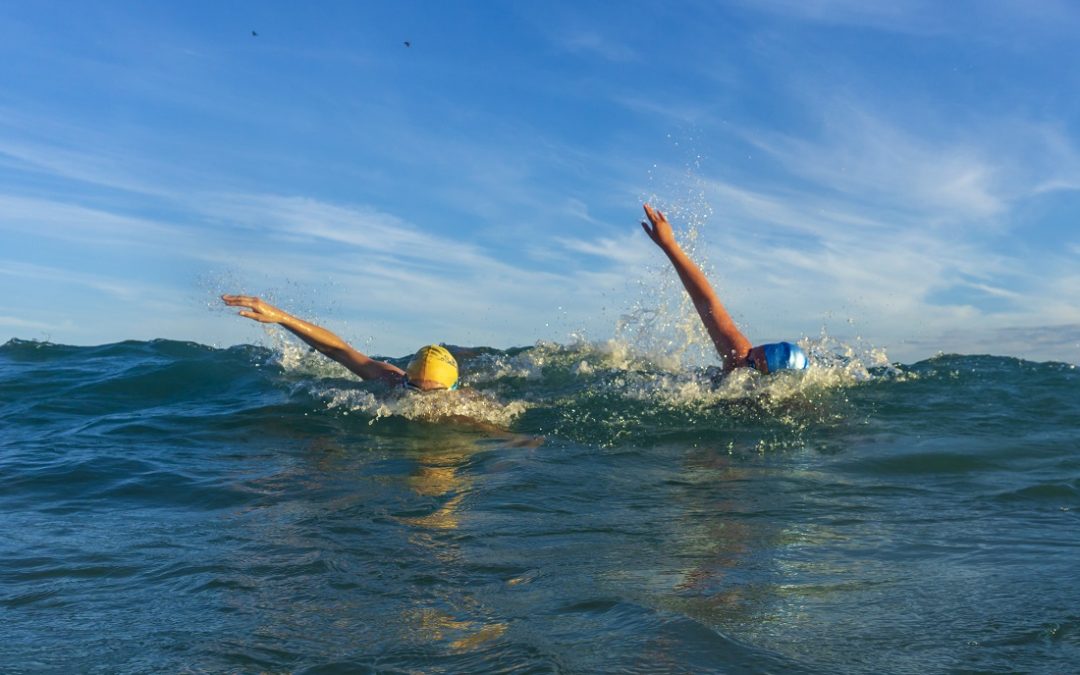Open water swimming although thrilling and exciting is also more tiring and physically demanding than swimming in the pool. This is due to a number of factors including currents and rips, waves, choppy and bumpy water and deep water; all of which can evoke feelings of discomfort and even panic. If you’re thinking of venturing out of the pool into the ocean we have a few tips of ways you can adapt your stroke to make your swim easier.
Tip 1 – Wide Arms
In comparison to pool swimming and depending on the swell and wind conditions, ocean swimming can be bumpy and choppy. This can cause you to feel wobbly and unstable whilst you’re swimming. To counteract this feeling, keep your arms out wide whilst you are swimming. Think of this as your stabilisation. Wide arms mean swimming with your hands out in front of your shoulders rather than in front of your head.
Tip 2 – Hold your catch
One of the most common mistakes when swimming freestyle is not holding your catch. To make sure you’re doing this, hold one arm up (in front of your shoulder) whilst the other arm pulls underwater. Your arm should only pull down as the other one comes over your shoulder to enter the water.
You can think of your ‘catch’ as your stability point and keeps your connection with the water whilst your other arm pulls and moves you forward. A wide catch will also give you more power by engaging more muscles both in your trunk and shoulders as well as increase your glide and minimise resistance in the water.
Tip 3 – Breath every two
Breathing every two strokes will not only help you stay calm whilst swimming in open water conditions but also provides a higher flow of oxygen to the bloodstream than breathing every 3 or 4 strokes.
When ocean swimming and in particular if you are swimming a long distance the only way you are going to get enough oxygen into your bloodstream and avoid fatigue is to breathe every two!
Tip 4 – Recovery (when your arm comes out and over the water)
We encourage our swimmers to swim with straight arms. Straight arms allow you to recover your arm within the shoulders natural range of movement, supports the shoulder girdle and leads to a stronger and longer stroke.
Bringing a straight arm recovery into your ocean swimming will also help to ensure that your hand and arm are high above the water. This ensures when you are swimming in bumpy and choppy conditions that you hand clears the water the whole way on your recovery.
Put your newfound ocean swimming stroke in action and learn more tips at one of our group or private ocean swimming sessions. For more info on our sessions click here.


